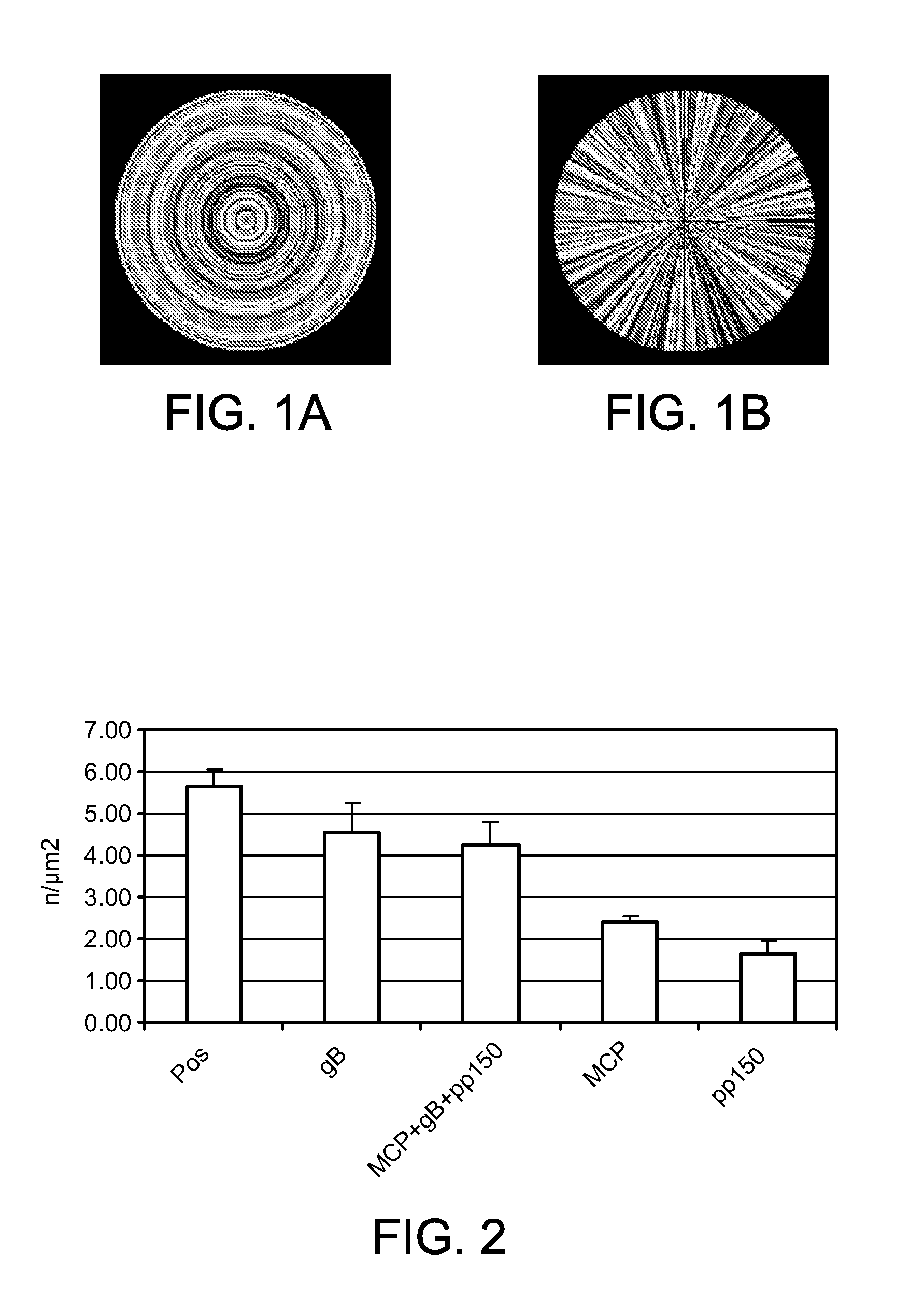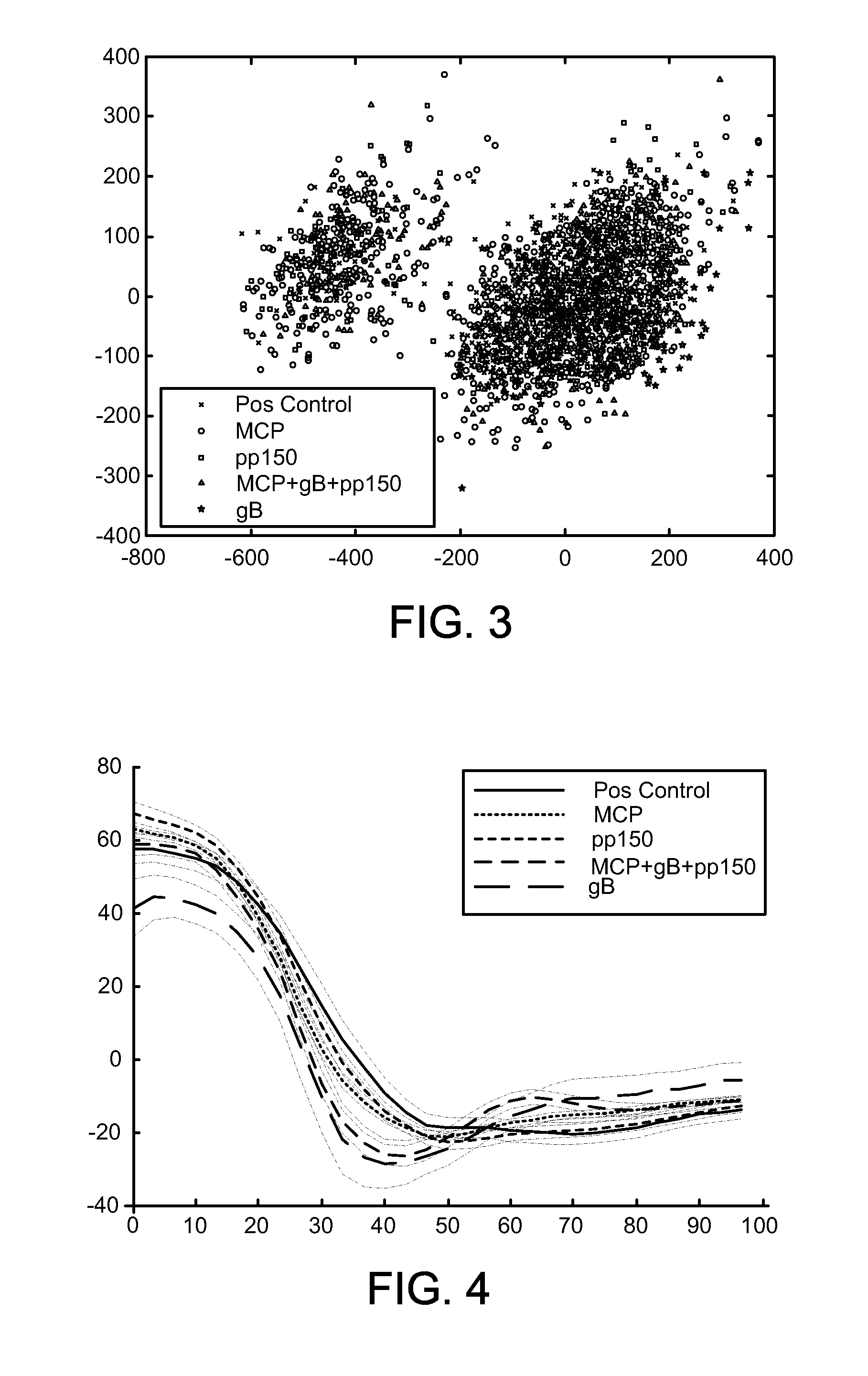Method for counting and segmenting viral particles in an image
a viral particle and image technology, applied in the field of counting, segmenting and identifying, can solve the problems of difficult to objectively, repeatedly and reliably describe the cell components, complex process of virus assembly, subject of intensive research,
- Summary
- Abstract
- Description
- Claims
- Application Information
AI Technical Summary
Problems solved by technology
Method used
Image
Examples
example
[0030]An example of materials and methods that may be used is described below. Human embryonic lung fibroblasts (HF) were maintained in bicarbonate-free minimal essential medium with Hank's salts (GIBCO BRL) supplemented with 25 mM HEPES [4-(2 hydroxyethyl)-1-piperazine ethanesulfonic acid], 10% heat inactivated fetal calf serum, L-glutamine (2 mM), penicillin (100 U / ml) and streptomycin (100 mg / ml) (GIBCO BRL, Grand Island, N.Y., USA). The cells were cultured in 175 cm2 tissue culture flasks (Corning, N.Y., USA) and used until passage 17. The cells were infected with HCMV at a multiplicity of infection (MOI) of 1. The virus supernatant was collected at 7 or 10 days post infection (pi). The virus supernatant was then cleared from cell debris by low speed centrifugation and frozen at −70° C. until used. Monolayers of HF cells grown in 96 well plates or on chamber slides were infected with HCMV AD169, at a multiplicity of infection (MOI) of 1.
[0031]Human pulmonary artery endothelial c...
PUM
 Login to View More
Login to View More Abstract
Description
Claims
Application Information
 Login to View More
Login to View More - R&D
- Intellectual Property
- Life Sciences
- Materials
- Tech Scout
- Unparalleled Data Quality
- Higher Quality Content
- 60% Fewer Hallucinations
Browse by: Latest US Patents, China's latest patents, Technical Efficacy Thesaurus, Application Domain, Technology Topic, Popular Technical Reports.
© 2025 PatSnap. All rights reserved.Legal|Privacy policy|Modern Slavery Act Transparency Statement|Sitemap|About US| Contact US: help@patsnap.com



